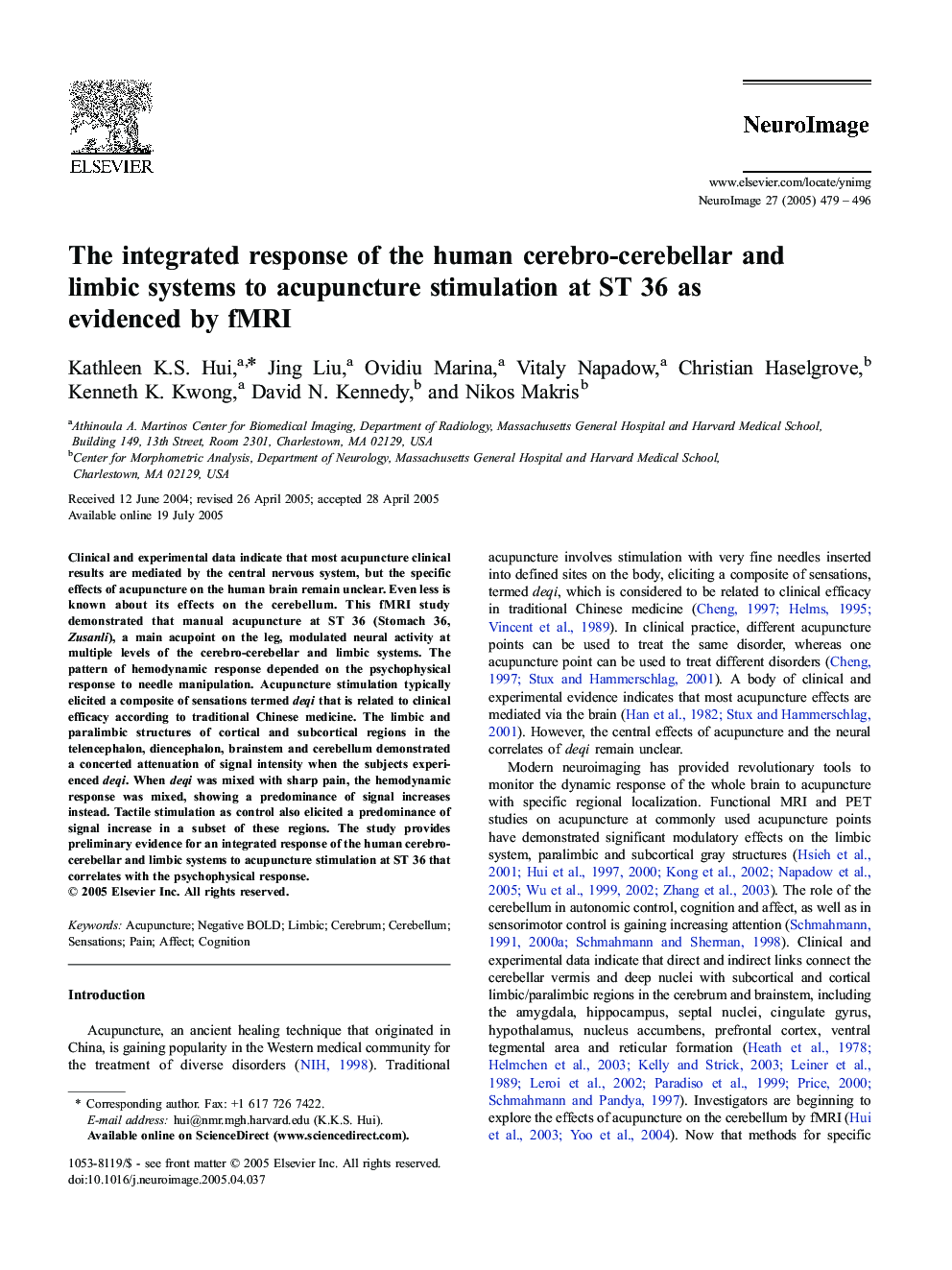| کد مقاله | کد نشریه | سال انتشار | مقاله انگلیسی | نسخه تمام متن |
|---|---|---|---|---|
| 9198249 | 1188893 | 2005 | 18 صفحه PDF | دانلود رایگان |
عنوان انگلیسی مقاله ISI
The integrated response of the human cerebro-cerebellar and limbic systems to acupuncture stimulation at ST 36 as evidenced by fMRI
دانلود مقاله + سفارش ترجمه
دانلود مقاله ISI انگلیسی
رایگان برای ایرانیان
کلمات کلیدی
موضوعات مرتبط
علوم زیستی و بیوفناوری
علم عصب شناسی
علوم اعصاب شناختی
پیش نمایش صفحه اول مقاله

چکیده انگلیسی
Clinical and experimental data indicate that most acupuncture clinical results are mediated by the central nervous system, but the specific effects of acupuncture on the human brain remain unclear. Even less is known about its effects on the cerebellum. This fMRI study demonstrated that manual acupuncture at ST 36 (Stomach 36, Zusanli), a main acupoint on the leg, modulated neural activity at multiple levels of the cerebro-cerebellar and limbic systems. The pattern of hemodynamic response depended on the psychophysical response to needle manipulation. Acupuncture stimulation typically elicited a composite of sensations termed deqi that is related to clinical efficacy according to traditional Chinese medicine. The limbic and paralimbic structures of cortical and subcortical regions in the telencephalon, diencephalon, brainstem and cerebellum demonstrated a concerted attenuation of signal intensity when the subjects experienced deqi. When deqi was mixed with sharp pain, the hemodynamic response was mixed, showing a predominance of signal increases instead. Tactile stimulation as control also elicited a predominance of signal increase in a subset of these regions. The study provides preliminary evidence for an integrated response of the human cerebro-cerebellar and limbic systems to acupuncture stimulation at ST 36 that correlates with the psychophysical response.
ناشر
Database: Elsevier - ScienceDirect (ساینس دایرکت)
Journal: NeuroImage - Volume 27, Issue 3, September 2005, Pages 479-496
Journal: NeuroImage - Volume 27, Issue 3, September 2005, Pages 479-496
نویسندگان
Kathleen K.S. Hui, Jing Liu, Ovidiu Marina, Vitaly Napadow, Christian Haselgrove, Kenneth K. Kwong, David N. Kennedy, Nikos Makris,